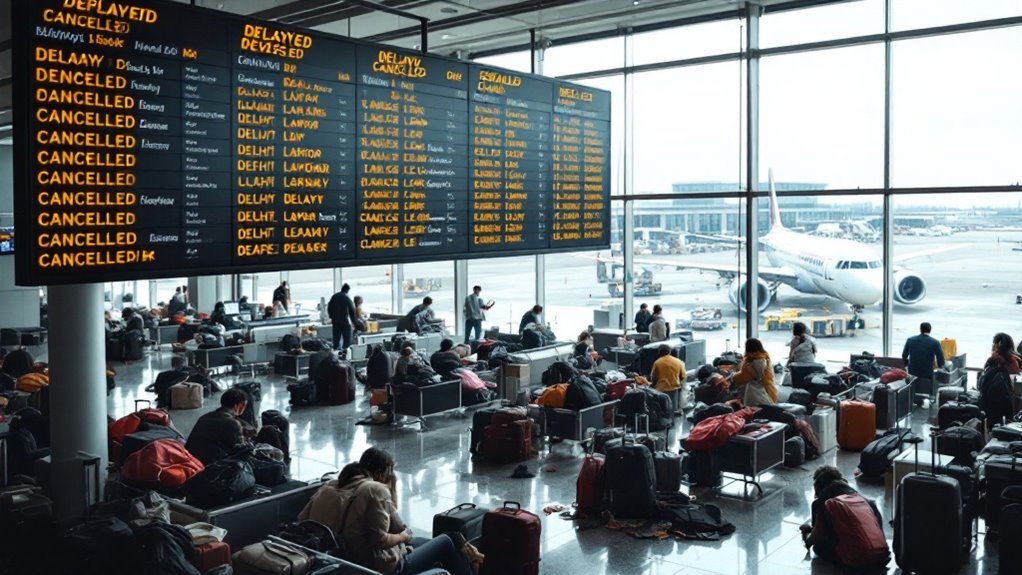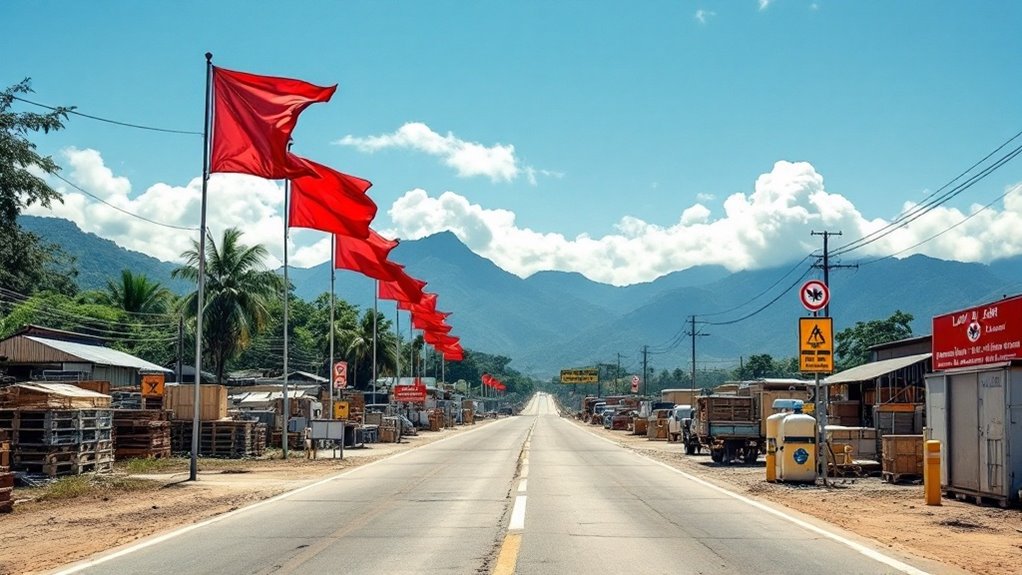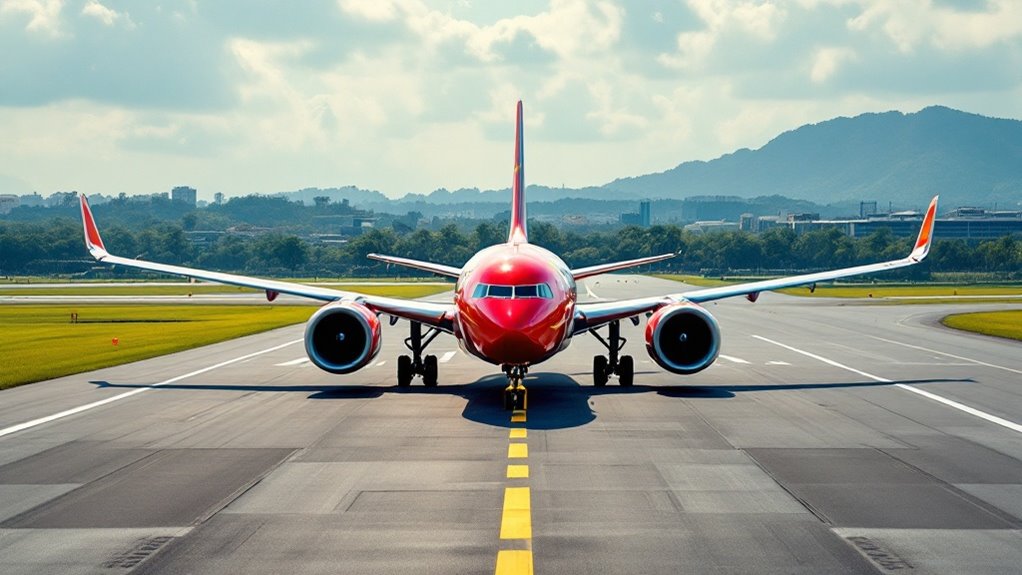In early 2019, escalating military tensions between India and Pakistan led to widespread airspace closures, forcing Asian and international airlines to reroute or cancel scores of flights. Pakistan shut its entire civilian airspace for 48 hours, while India closed several northern airports, causing severe disruptions, longer flight paths, and operational challenges for carriers like Air India, Thai Airways, and IndiGo. The resulting chaos left passengers stranded and airline finances strained, while governments issued urgent travel advisories. Additional details illuminate the broader implications of this crisis.
As tensions escalated between India and Pakistan in one of the region’s most severe confrontations in over two decades, widespread disruption struck Asian air travel, forcing airlines to rapidly alter flight paths and schedules. The conflict, rooted in the longstanding dispute between the two neighboring nuclear powers, resulted in significant civilian airspace closures and safety concerns that rippled across Asia and beyond.
Pakistan responded by shutting its entire civilian airspace for a 48-hour period, while India closed several northern airports, including key hubs such as Srinagar, Leh, Jammu, Dharamshala, and Amritsar. These measures, implemented amid heightened military activity and stringent operational protocols, were designed to mitigate risk as regional tensions intensified. Civilian airspace in Pakistan closed for 48 hours following the military’s announcement, affecting both commercial and cargo flights across the region.
Amid rising tensions, Pakistan closed its airspace for 48 hours as India shut key northern airports to reduce escalating risks.
The airspace restrictions triggered immediate and extensive flight diversions. International carriers, confronting the closure of crucial air corridors, rerouted flights to avoid both Indian and Pakistani airspaces. Airlines such as Thai Airways and EVA Air adjusted their schedules, resulting in longer flight times, additional technical stops, and increased operational complexity. Flight tracking images showed a lack of civilian aircraft in north-western India and Pakistan airspace, highlighting the scale of the disruption and the aviation industry’s swift response to evolving safety concerns.
At least 52 flights in Pakistan were canceled outright, while Indian carriers—including Air India, IndiGo, and SpiceJet—suspended domestic operations to affected airports. The sudden changes caused significant logistical challenges, with airlines needing to accommodate stranded passengers and reassess fuel and crew requirements on short notice.
Travelers faced widespread delays and cancellations, particularly those with itineraries that included connections between Europe and Asia. In response, airlines provided refunds and rescheduling options, though many passengers encountered extended wait times and uncertainty. The financial impact was immediate, with the share prices of some airlines, such as IndiGo, experiencing declines as the disruptions unfolded.
Governments responded by issuing travel advisories, with the UK Foreign Office and others urging travelers to avoid the India-Pakistan border area and remain vigilant. Passengers were encouraged to register with official alert systems and monitor local news for updates.
The situation underscored the vulnerability of international air travel to geopolitical instability, highlighting the complex interplay between civil aviation safety, regional security, and the operational realities faced by airlines during periods of conflict.









